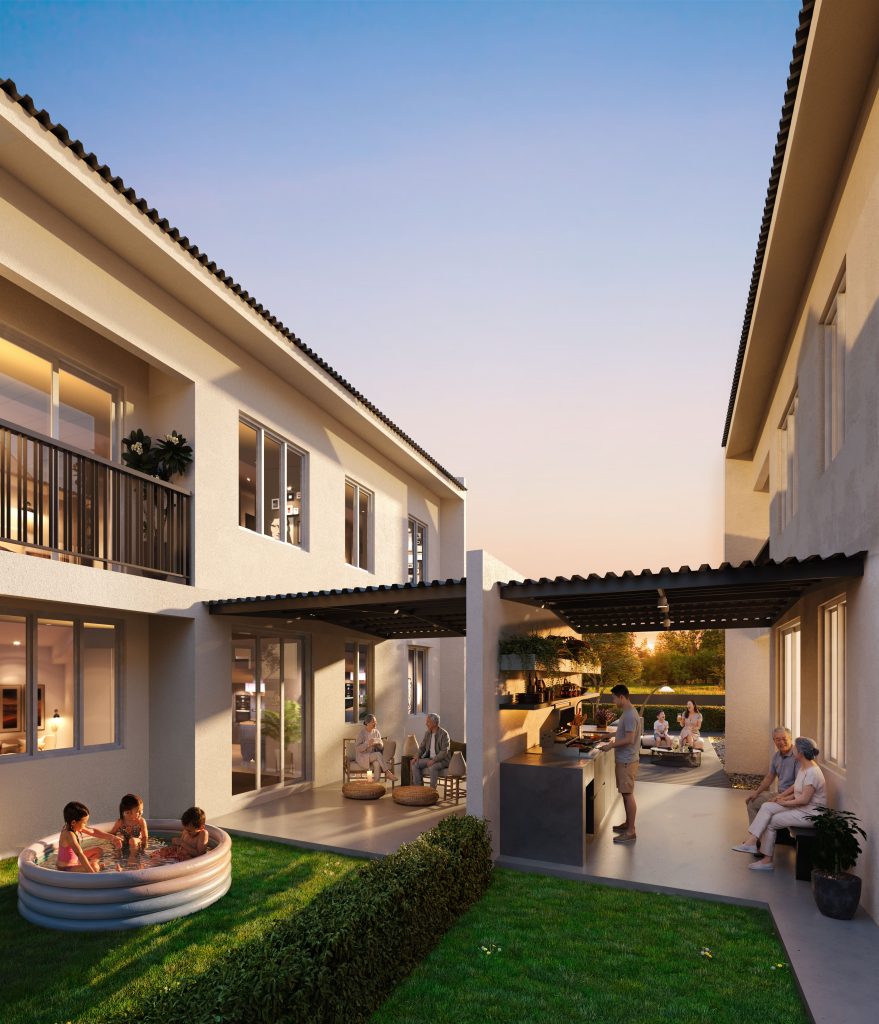
With elevated homes, escaping from the ravages of floods can be avoided. Photo courtesy of Sharika Tasnim.
Contributed by Sharika Tasnim
Western-inspired design styles, whether they are contemporary, functional or stylish, have long dominated the architectural scene in Malaysia. With the advent of modernism, the embracing of structural innovations, functionalism of buildings, elimination of ornamentations and rational use of materials are all characteristics of this architectural movement.
In addition, modernist architecture features open floor plans, steel or concrete structures, rectangular or cubist-shaped designs and huge windows with metal and glass frames. While modern houses in Malaysia are either a transformation of traditional houses or a development of the urban housing typology, it is believed to be widely accepted because of the maximum utilisation of land and to accommodate the present social and economic needs.
Besides that, modern house designs in Malaysia are preferred by many because they are not outdated. However, the design of modern houses has failed to protect the residents from natural disasters such as floods.
Approximately 29,800 sq km or 9% of Malaysia's total land area is vulnerable to flooding, resulting in significant losses to the Rakyat. According to a 2021 special report from the Malaysian Department of Statistics, public assets account for the highest losses dues to floods, followed by residences.
To reduce such losses, utilising traditional Malay architecture ideas may provide a solution to flood-prone areas. In these areas, it may be more worthwhile to build homes on stilts, especially in the face of climate change.
"One of the most prominent visual characteristics of traditional Malay architecture is elevating the building on stilts to avoid damage from flooding," explained Universiti Kebangsaan Malaysia's architect and academician Mastor Surat.
This was a result of Malaysia's variations in the magnitude of its tidal fluctuations. Rivers and their tributaries provided important travel routes and large settlements sprang up along river banks. To safeguard their homes, communities build them on a higher elevation than the rising tides.
Taking a lesson from this, it might not be such a bad idea to build on stilts. Albeit building on stilts requires additional expenses for construction but the economic savings from avoiding flood damage might be worth the extra expenditure in the long run.
Compared to modern houses, the adaptation of the characteristics of traditional Malay architecture is more beneficial to the residents of flood-prone areas because of its capability to minimise damage from flood disasters, Mastor said.
In addition to making the structure flood-proof, raising it on stilts helps it to catch higher-velocity breeze, which keeps the interiors continually aired in the tropical climate of Malaysia. One of the most distinguishing features of modern houses is that they are constructed at ground level. Therefore, airflow is restricted.
Such adaptation of traditional Malay architecture in modern houses can be a great integration to optimise the thermal comfort of the residents.
As a result, air-conditioning usage, which heavily consumes electricity, can be minimised. Moreover, heat-trapping gases known as refrigerants are a direct threat to the climate. Although refrigerants like hydrofluorocarbons contribute very little to greenhouse gas emissions, they trap thousands of times more heat in the atmosphere than carbon dioxide, contributing to global warming.
Global climate change is likely to worsen the situation in flood-prone areas, so efforts should be made to live in harmony with water by adopting a workable alternative. And to minimise damage caused by floods, it is best to be equipped with relevant knowledge and expertise to circumvent untoward designs.
Stay ahead of the crowd and enjoy fresh insights on real estate, property development, and lifestyle trends when you subscribe to our newsletter and follow us on social media.

















































